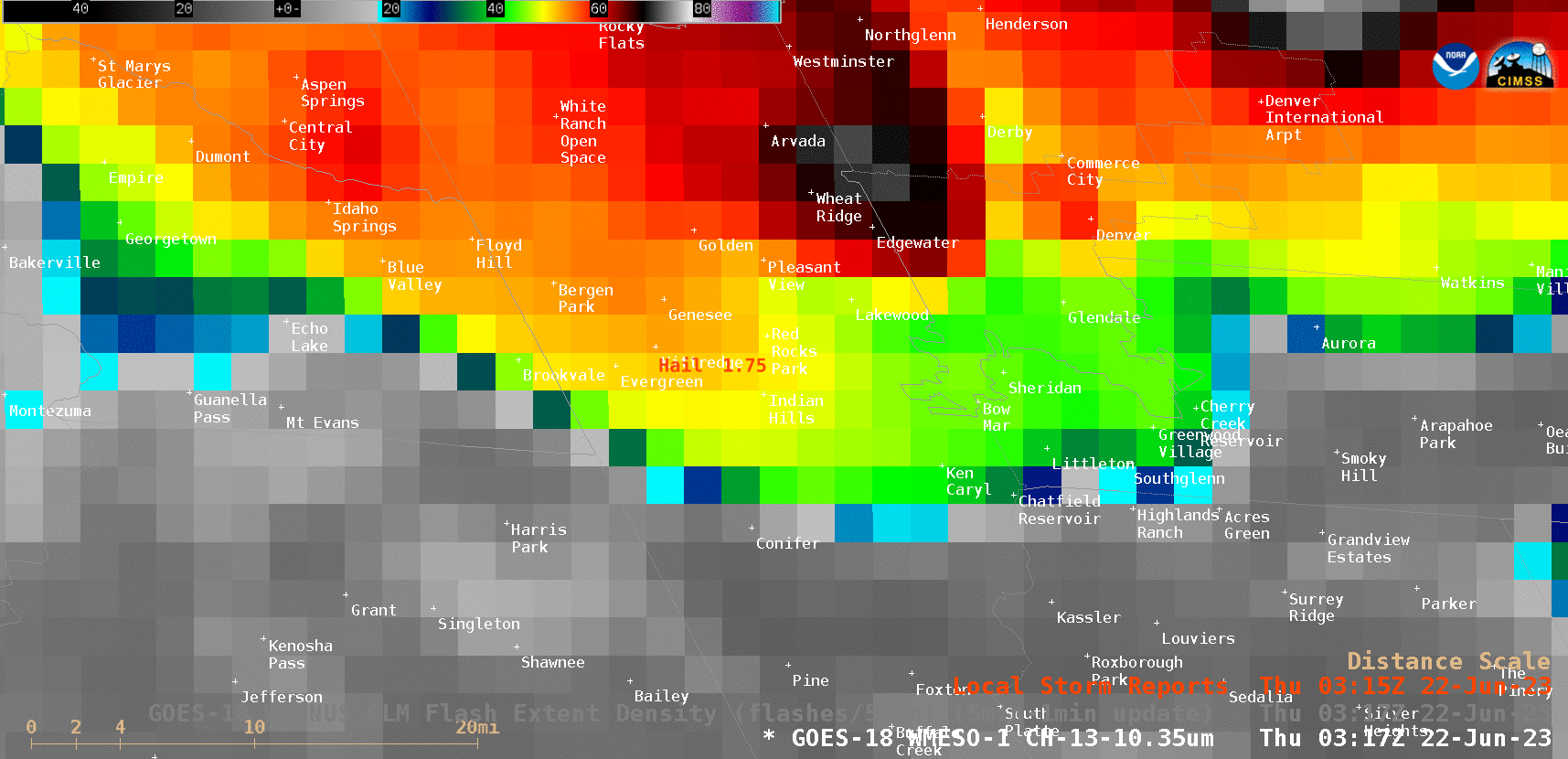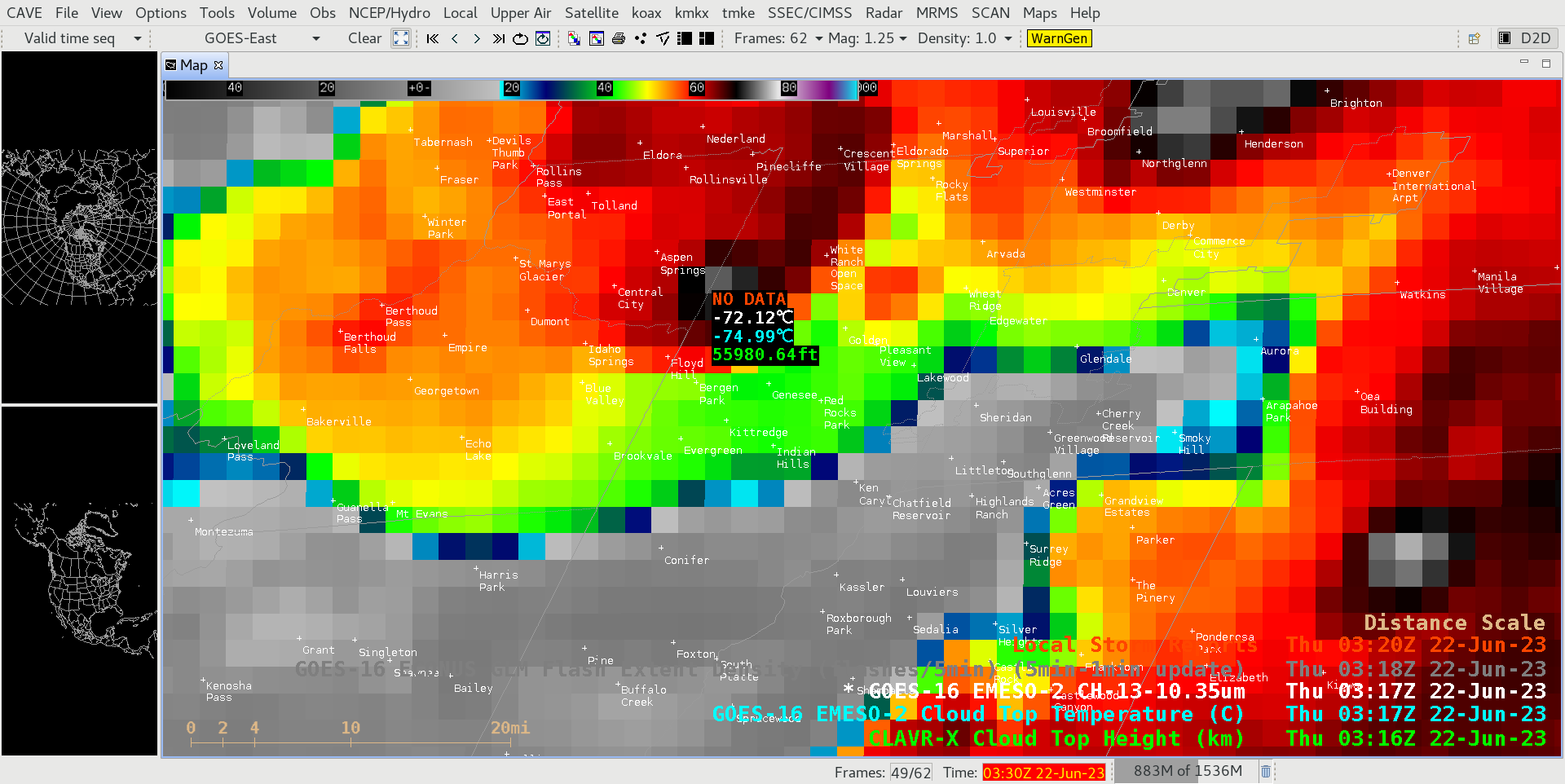Large hail event at a Red Rocks concert in Colorado, viewed using GOES-16 and GOES-18
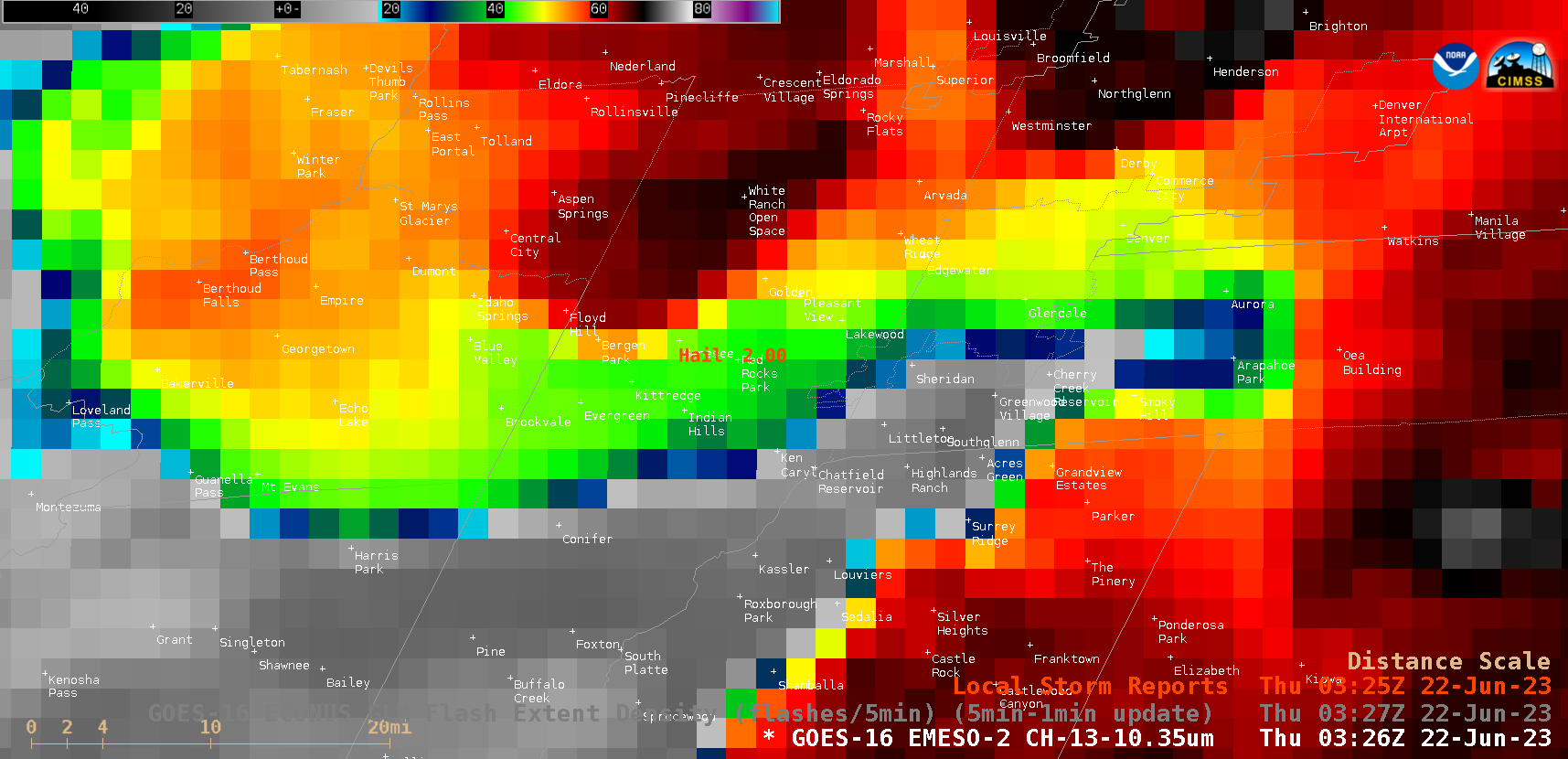
GOES-16 “Clean” Infrared Window (10.3 µm) images, with/without an overlay of GLM Flash Extent Density, and Local Storm Reports plotted in red [click to play animated GIF| MP4]
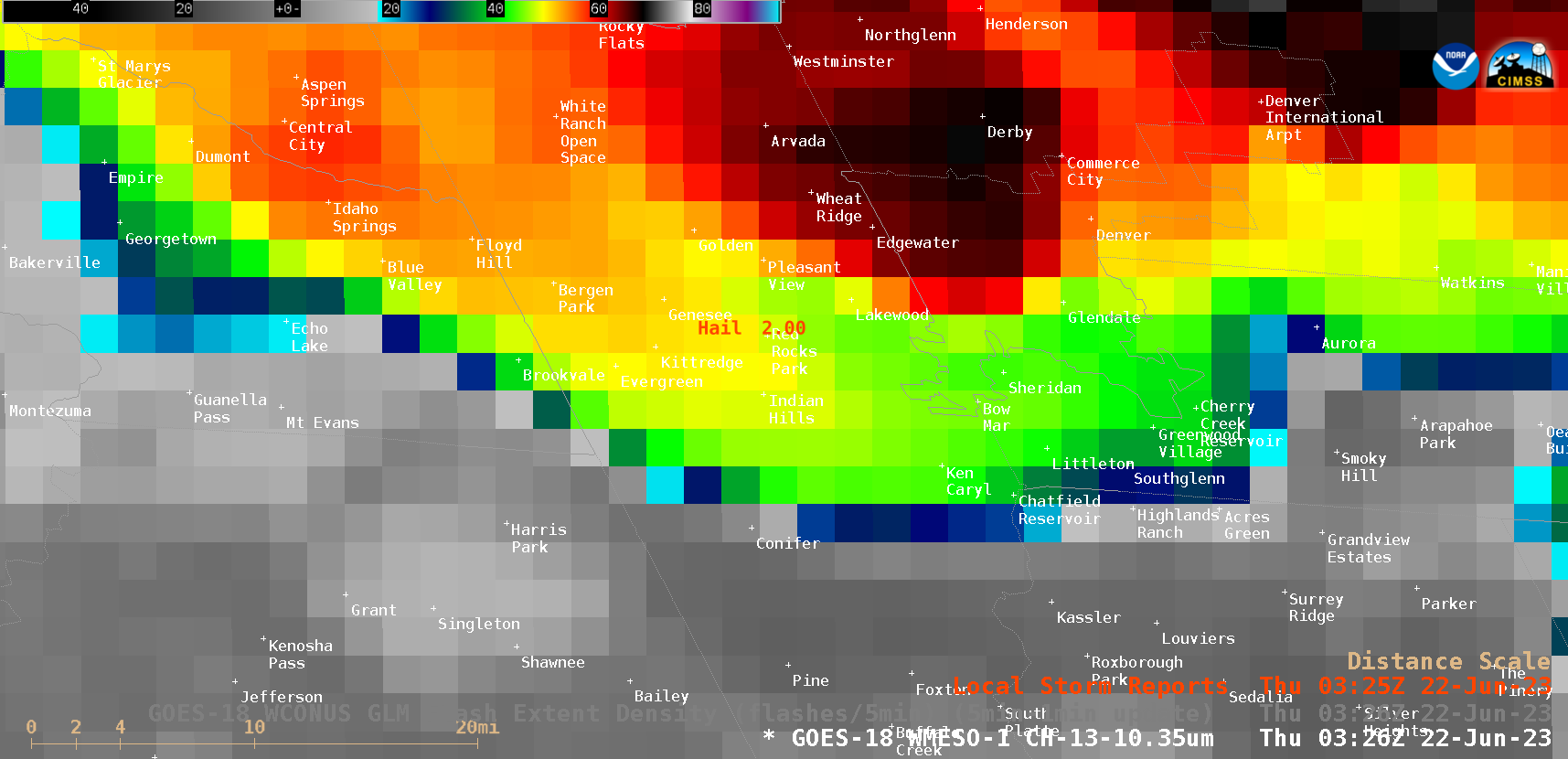
GOES-18 “Clean” Infrared Window (10.3 µm) images, with/without an overlay of GLM Flash Extent Density, and Local Storm Reports plotted in red [click to play animated GIF| MP4]
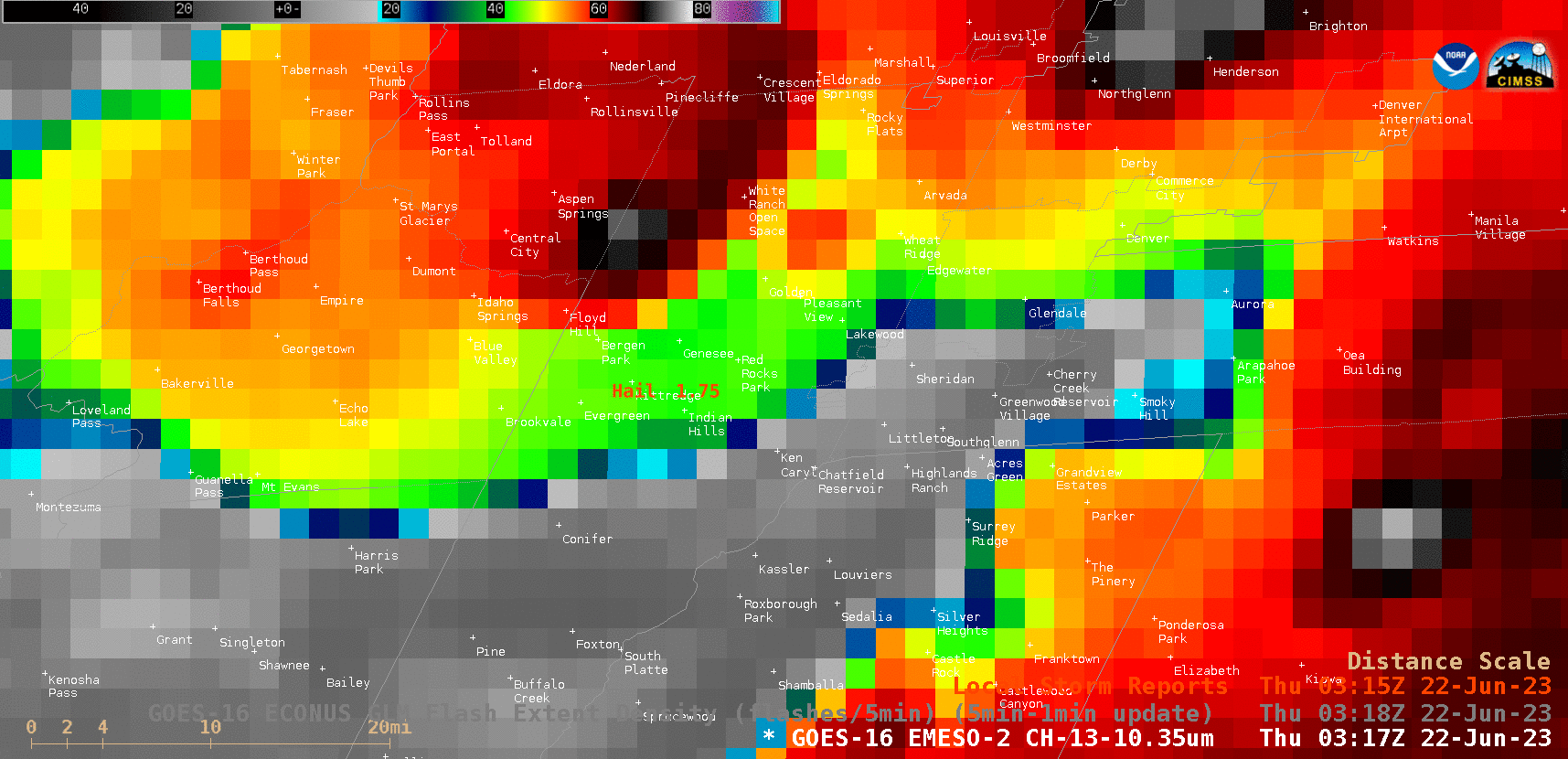
GOES-16 “Clean” Infrared Window (10.3 µm) image at 0317 UTC (with/without an overlay of GLM Flash Extent Density) and a Local Storm Report plotted in red [click to enlarge]


